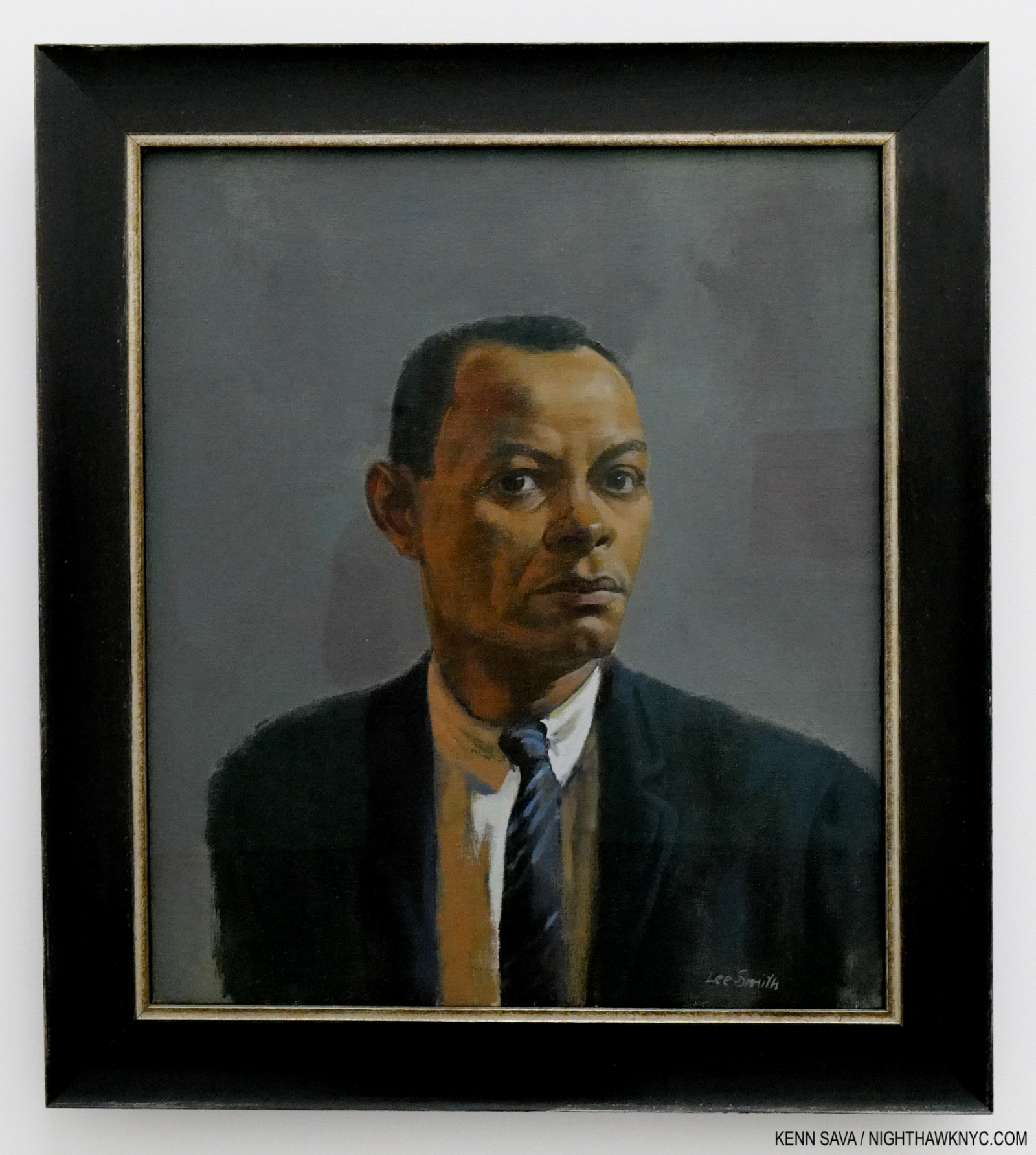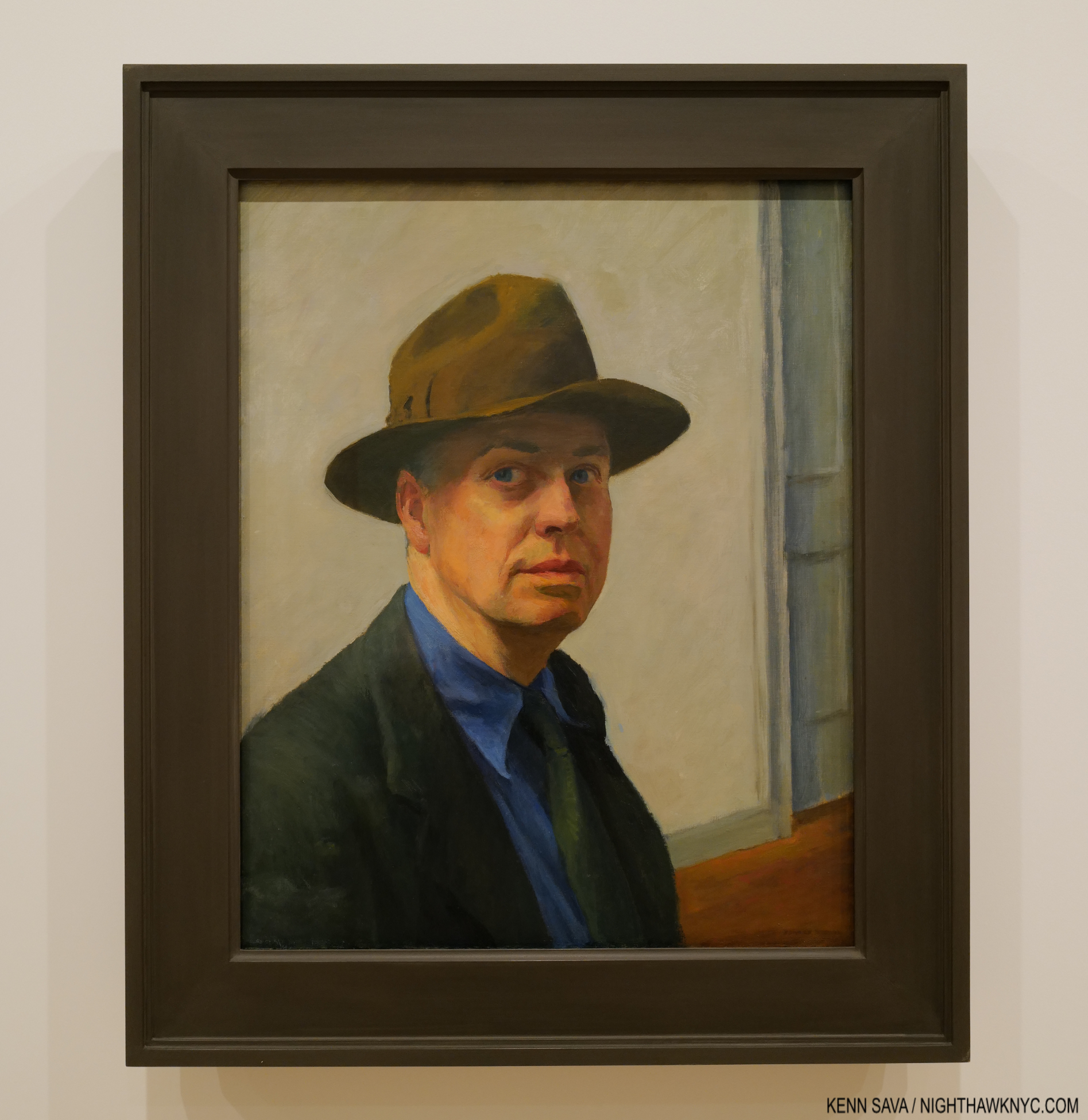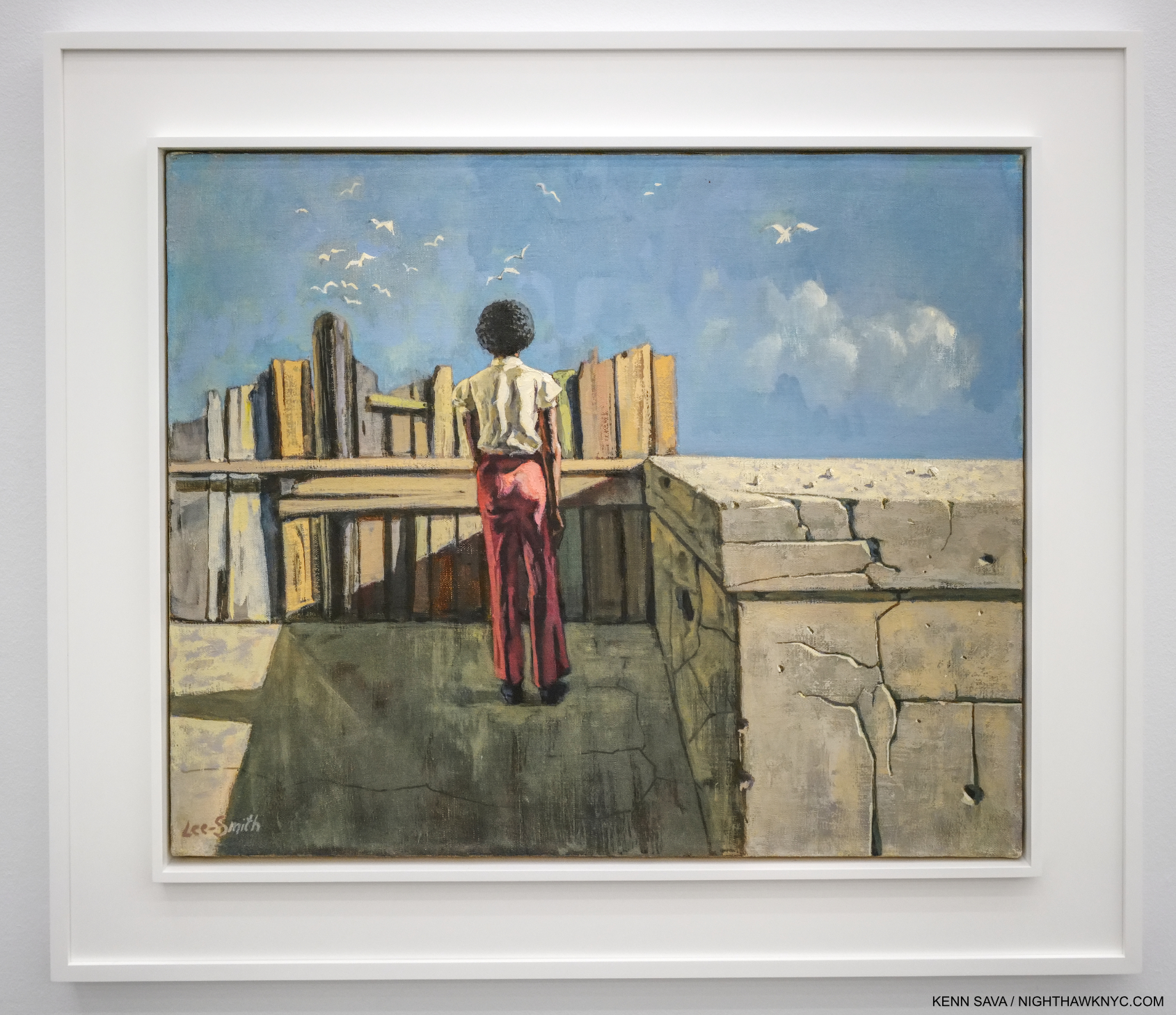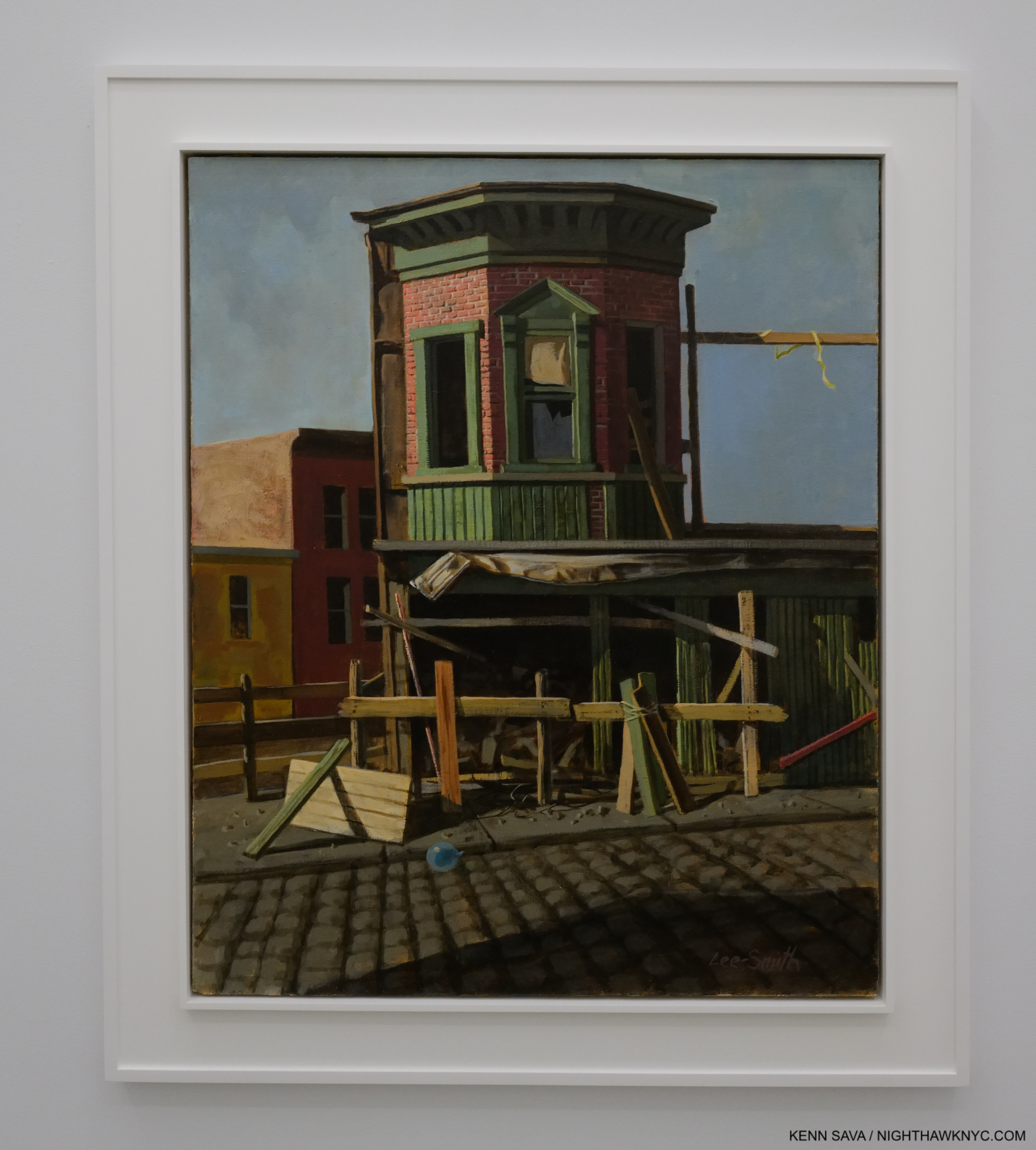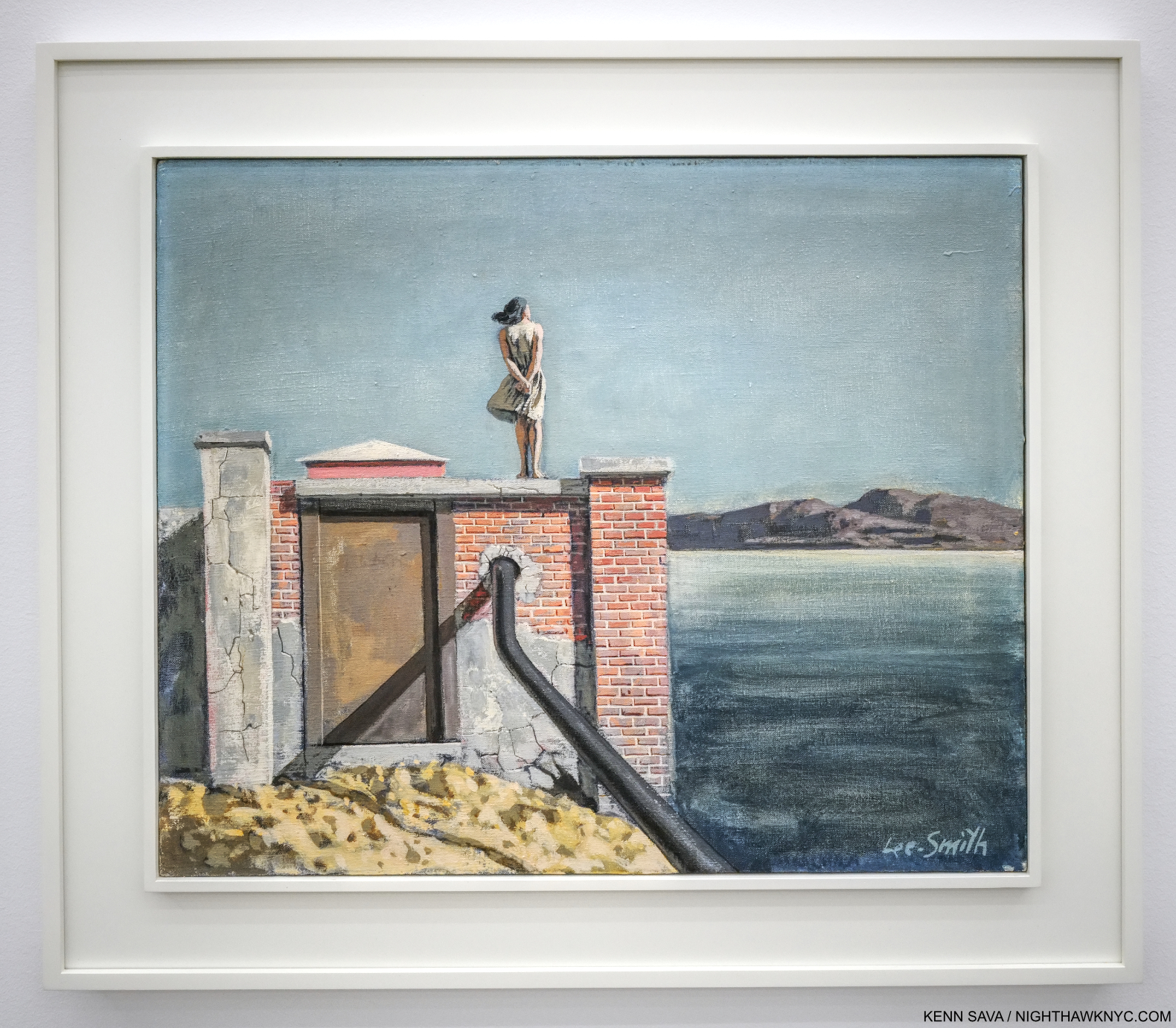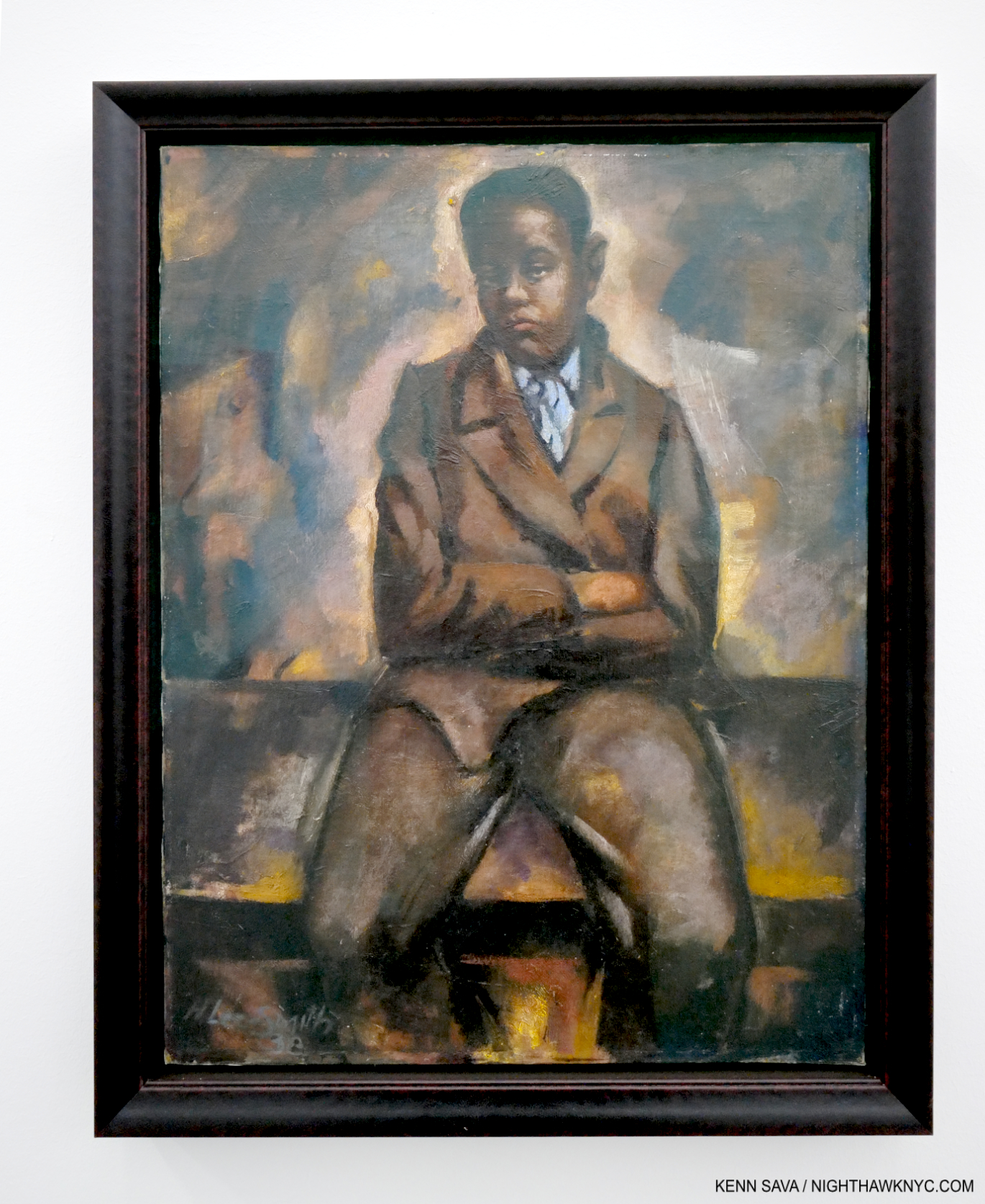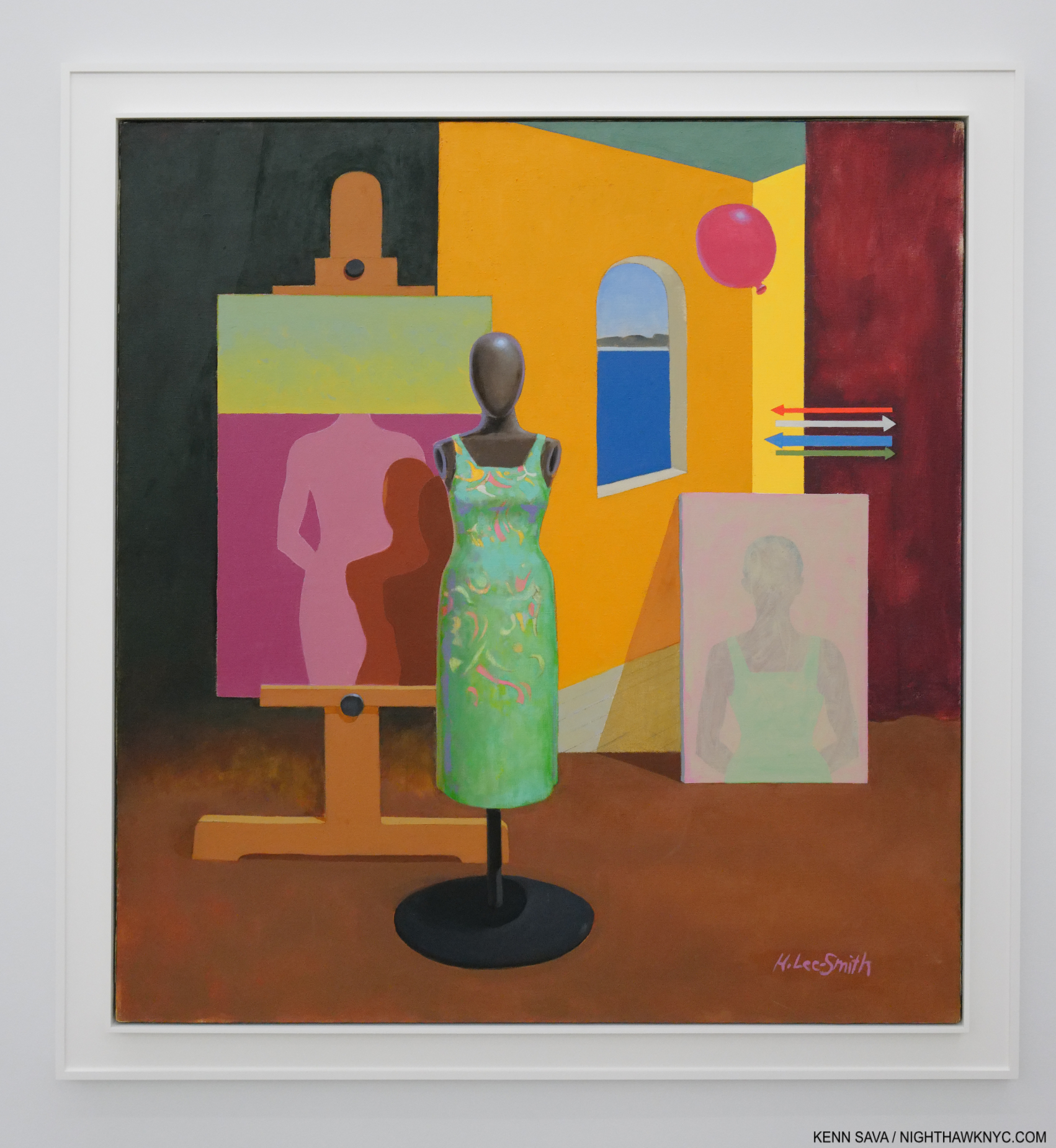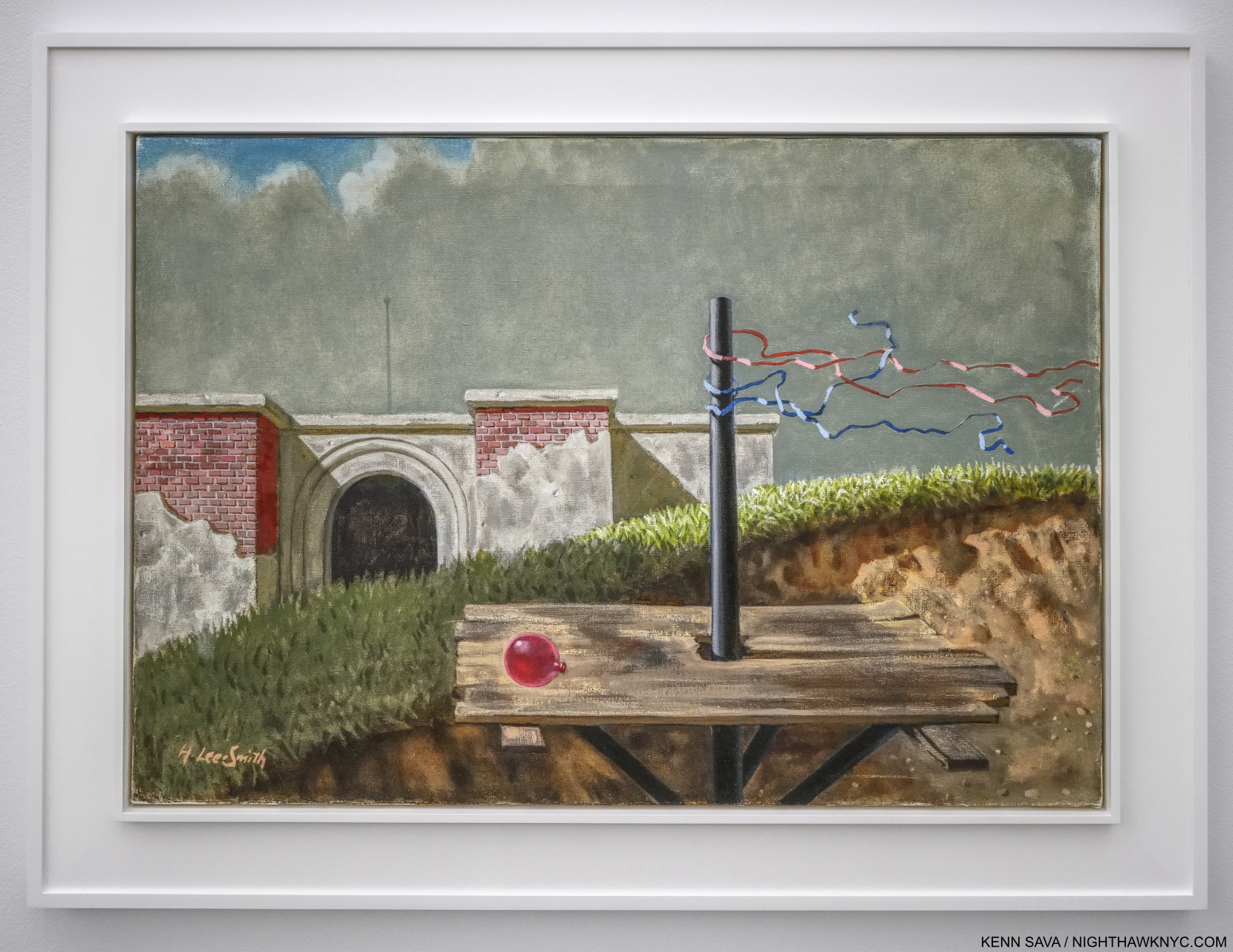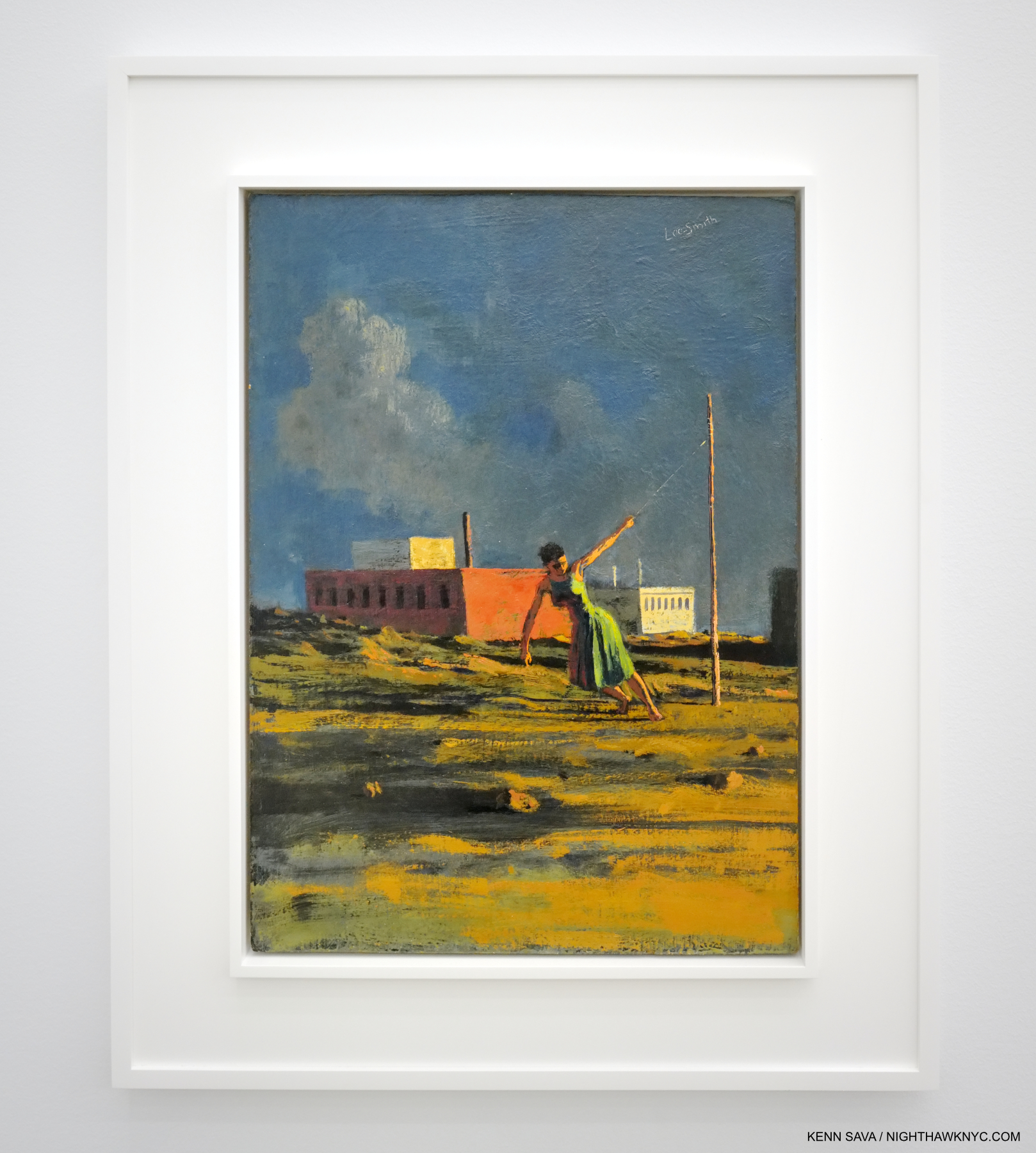This site is Free & Ad-Free! If you find it worthwhile, please donate to support it & independent Art writing. Thank you.
Written & Photographed by Kenn Sava
Show seen- Hughie Lee-Smith @Karma
Who?
That’s probably the first thought coming to the minds of most reading the name Hughie Lee-Smith. I’ll admit his name was new to me, too, when I came across a thumbnail sized repro of one of his Paintings in a listing for a new show of his work. That was enough to draw me down to Karma’s East 2nd Street space to see Hughie Lee-Smith. Having seen said show, the mystery is now how Hughie Lee-Smith has remained such a well-kept secret during his lifetime (1915-1999), and still, 23 years after his passing.
Beginning to think over what I saw, I felt his work springs from a solid base of influences. For example, his 1964 Self-Portrait vaguely echoed that of another, at least for me.
Both Artists strike a 3/4 pose, though their bodies are positioned differently, both wear a jacket, shirt and tie, and both look out at the viewer- Mr. Hopper directly. Mr. Lee-Smith looks somewhat through the viewer it seems to me.
I’ll admit I have a weakness for Painters who evoke feelings similar to those I get when I look at Hopper, Balthus or Giorgio de Chirico, and I get them when I look at Mr. Lee-Smith’s work, but it’s more than that. Mr. Lee-Smith uses some of their devices- de Chirico’s buildings, banners, deserted spaces, Hopper’s lone figures, Balthus’s female poetry, to the point that the visual evidence says they were influences. Then, he takes them someplace else. He makes these elements part of his own visual vocabulary, not the end point. Mr. Lee-Smith’s end results are different and resolutely his own. His work stands on its own considerable merits.
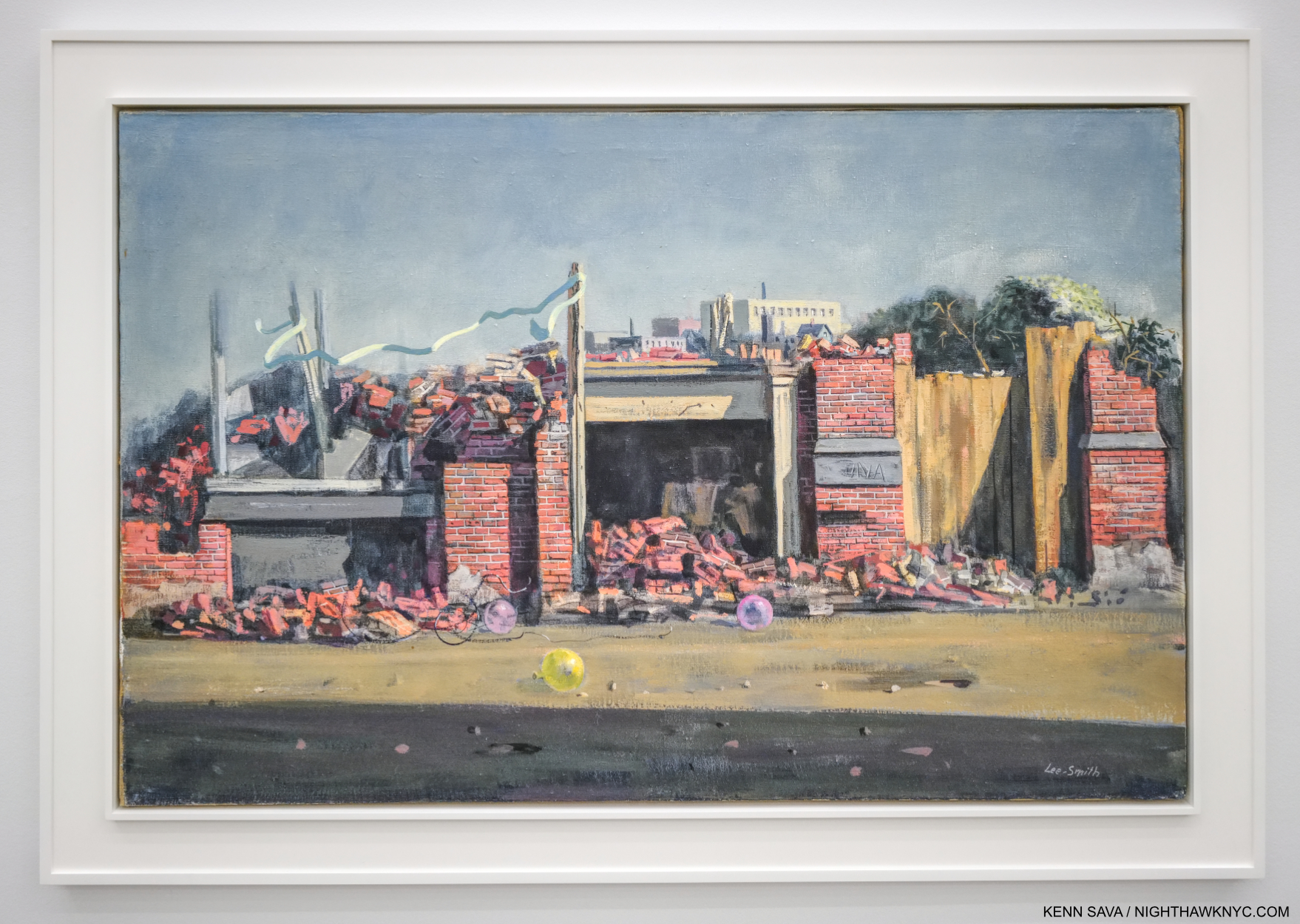
Aftermath, 1960, Oil on linen canvas, 30 x 46 inches. Mr. Lee-Smith is a master of scenes like this in my view. There’s so much about this that intrigues, from the encroaching shadow to the globes and ribbon, which add somewhat incongruous “celebratory elements,” to the still-standing buildings in the background. And mostly, “Aftermath” of what? A portrait of urban decay? A meditation on death? Or…?
At Karma, the 34 Paintings on display make the case for him as a real omission from the canon of 20th century American Painting. Painting after Painting draws the viewer in, then holds his or her gaze indefinitely. Each work is open-ended. Each feels like a moment frozen in time, a snapshot of a dream, or a memory. Like a dream or a memory, images from one place or time often collide with others creating a scene that’s not “real.” For me, at least, I don’t consider them “surreal.” They manage to hold on to too much that is all to real in the world- crumbling walls, signs of decay, and elements that were the New Topographic Photography movement’s meat.
I suspect that a number of museums who don’t own his work will be looking to acquire it.
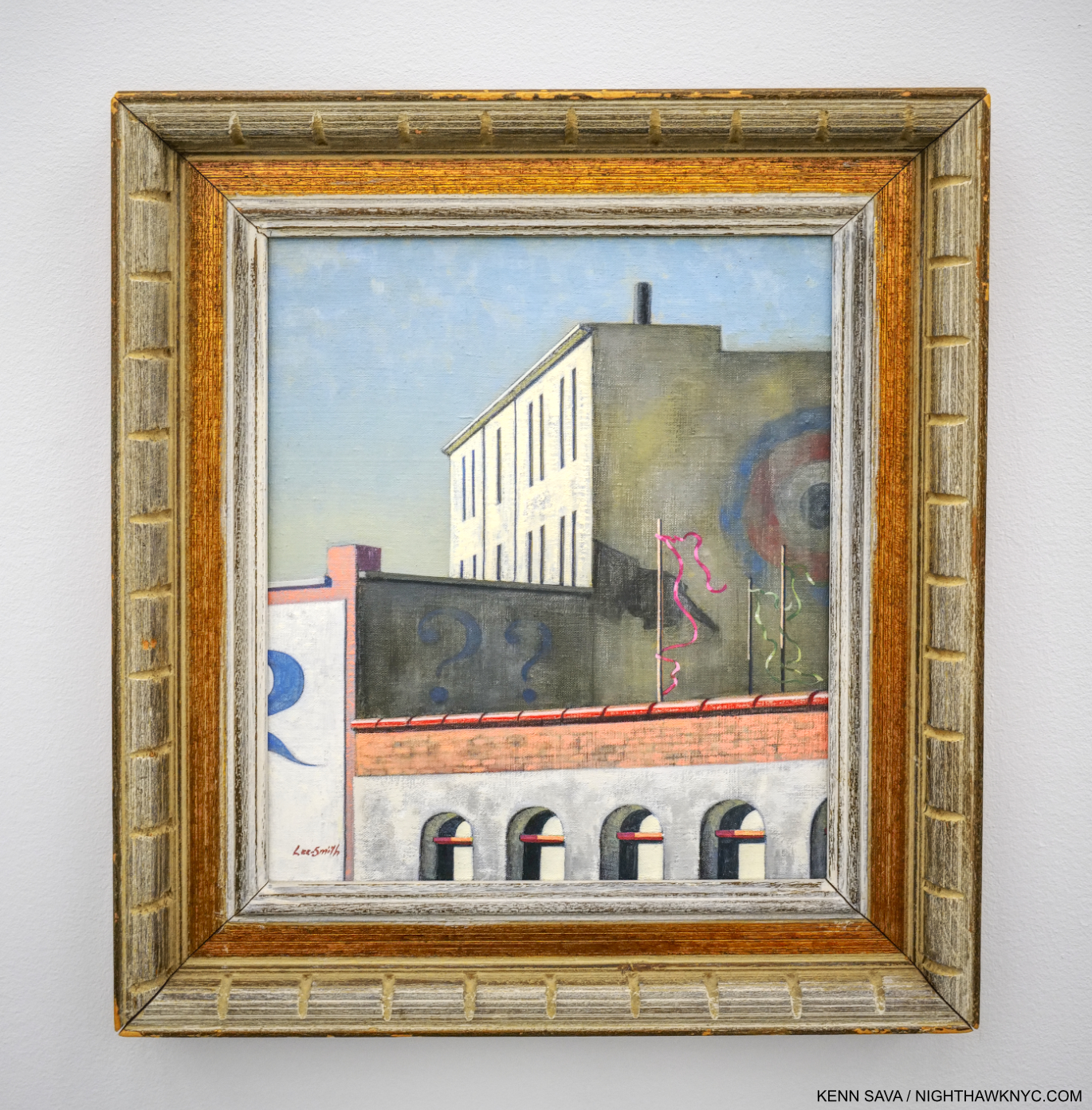
Festive Vista, 1980, Oil on canvas, 15 x 13 inches. Already in a museum- The Studio Museum of Harlerm’s Permanent Collection. The arched windows and streamers are similar to those seen in de Chirico, the view reminiscent of Hopper, but what Mr. Lee-Smith does with this makes it his own. Targets and streamers recur in his work, as already has been seen.
Currently, his work is in the Smithsonian American Art Museum, The Studio Museum of Harlerm and SFMoMA, among others. He is, also, in The Metropolitan Museum of Art (they own a Watercolor, acquired in 1994, and 3 Lithographs, acquired in 1943 and 1999), though he is not in MoMA or the Whitney. So, it comes as no surprise that the Karma show is the first substantial show of Hughie Lee-Smith here in 20 years. Not a surprise but unfortunate.
It shows convincingly that his work speaks fluently to today’s viewer, particularly at a time of recent forced isolation.
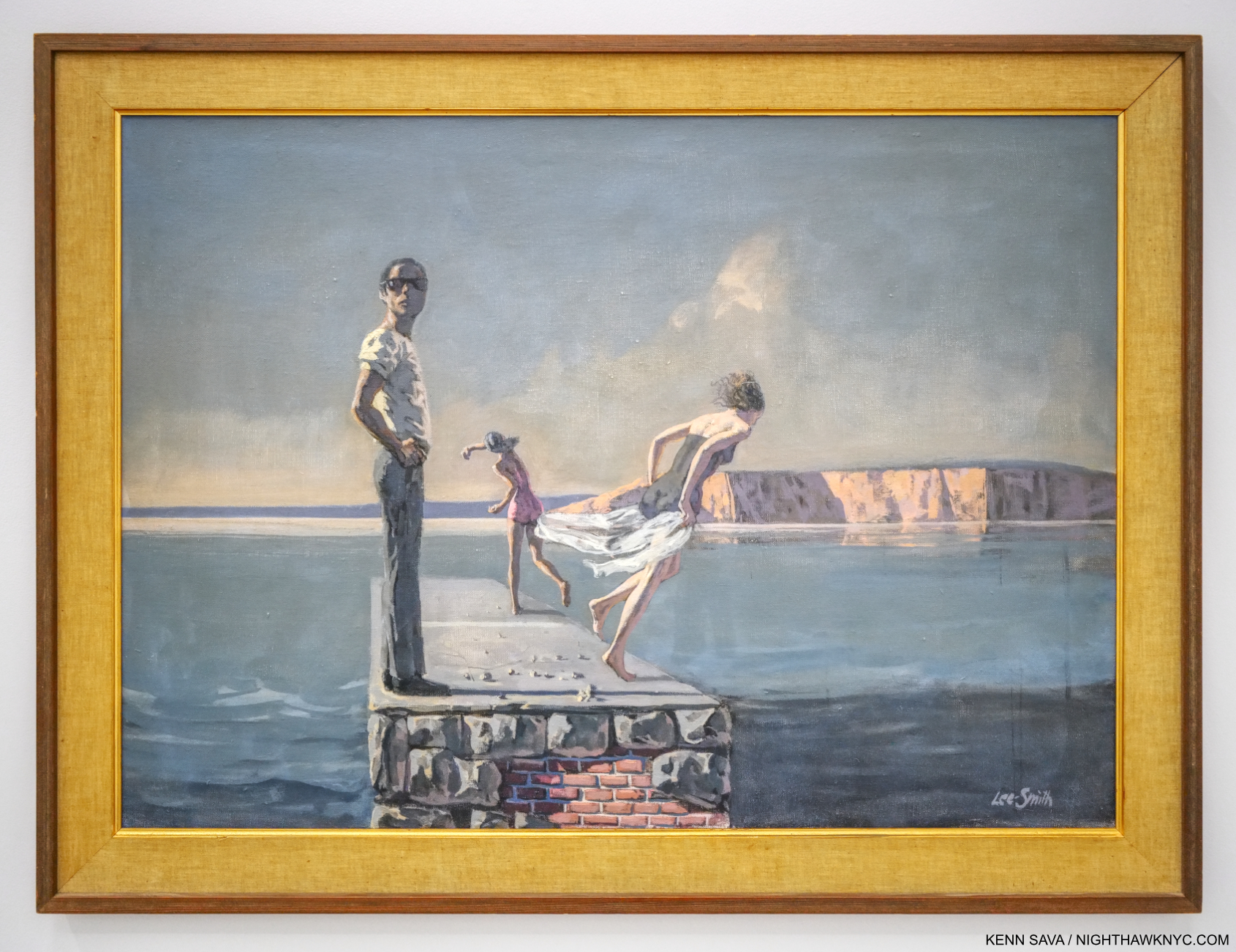
Outing, c.1970, Oil on canvas, 26 x 36 inches. The woman on the right strikes a pose similar to those seen on more than a few mast heads. I wonder if the male figure is a “Self-Portait” or a surrogate.
Whereas Mr. de Chirico used mannequins and creatures of his own invention as surrogates, Mr. Lee-Smith uses people. Usually alone, or alone together in groups, in a number of these works which serves to neutralize the metaphysical air that surrounds Mr. de Chirico’s early work to 1920 or so. This humanizing shows man (or woman) caught between nature and the world he’s constructed, which is often seen in disrepair in spite of the festive balloons and streamers the Artist often includes. Perhaps they are remnants of better times? That’s easy to relate to now, too.
Mr. Lee-Smith was not to be confined to working in one genre. The show also included a few Portraits and Still-Lifes.
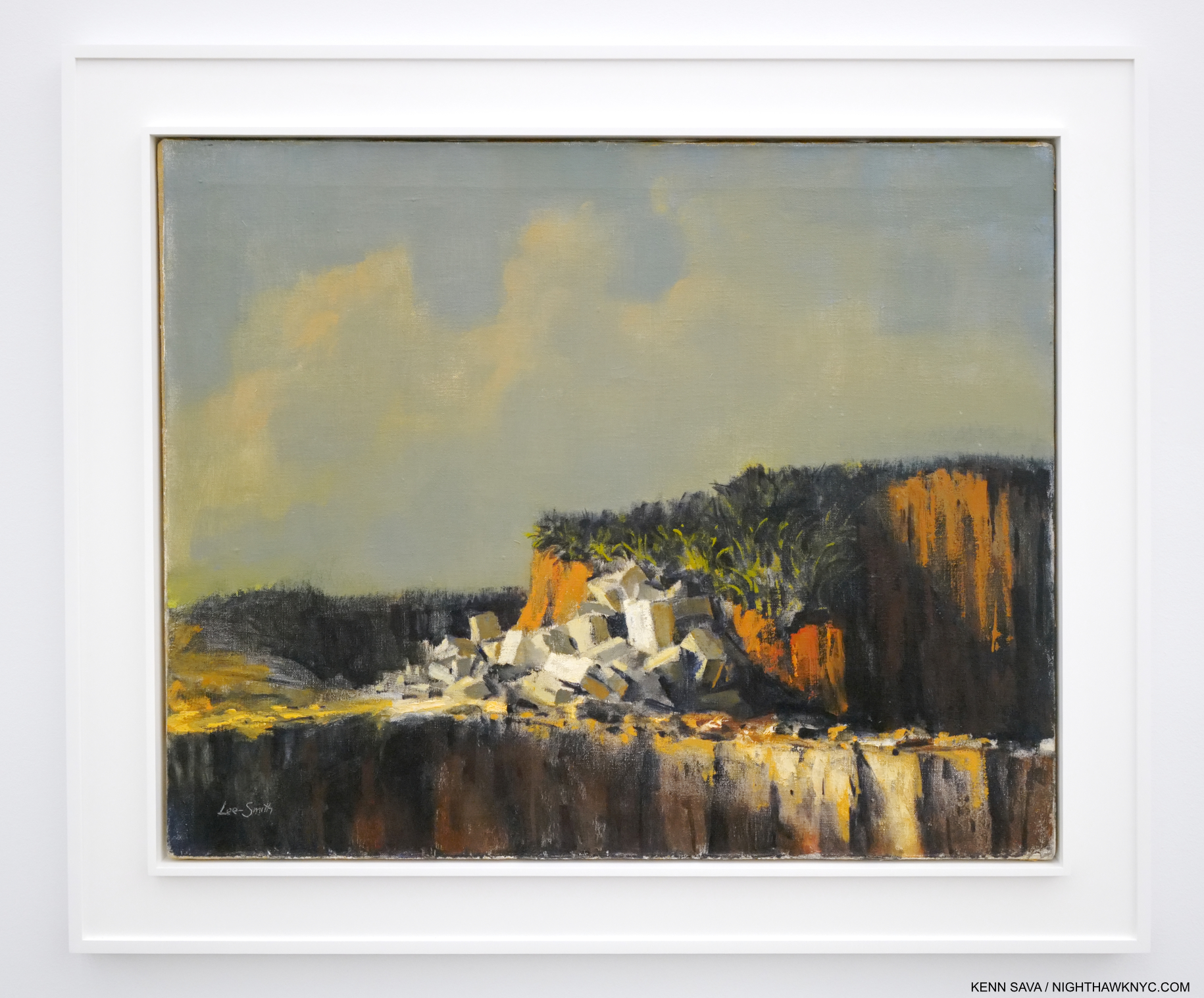
Cliff Grass, 1950, Oil on canvas, 26 x 32 inches. The geometry (not the light or color) brings my mind to later Cézanne when I see this.
Mr. Lee-Smith loves to juxtapose and include surprising elements that serve to up-end any easy “interpretation” of the composition.
Still there is nothing here that is not part of the world- natural or man-made. He seems to feel no need to delve into the supernatural, like the Surrealists.
Still, every element, wether seemingly major or minor, deserves attention. As I worked my way through the inventory of things included in his work- partially those that recur, one element that particularly caught my eye was Mr. Lee-Smith’s recurring brickwork. Each stone is very carefully rendered- whether in the foreground or background. In The Platform, the entire middle ground of a table, earth and grass is out of focus, yet each brick in the back is in sharp detail. Bricks are useful elements because they can be rendered in a number of ways- as a solid wall, or as a crumbling wall, for instance. Both are seen in the show, and both carry their own connotations with them, leaving the viewer to sort out what is what. That is the case for me after seeing this show. I’ll be weighing all the elements and thinking about these works until the next time I see Mr. Lee-Smith’s Art.
Art history seems to have skipped over Hughie Lee-Smith during his lifetime in its rush to judgement. That’s another confirmation that it’s still too early to write the history of 20th century Art. Time will be the ultimate judge of all Art. More time needs to pass for it all to sit and see how it speaks to people over some time- at least 100 years.
I have a feeling time is going to be kind to Hughie Lee-Smith’s work, and a number of his pieces are going to continue to speak to viewers indefinitely. Hughie Lee-Smith at Karma is the first indication of this. It won’t be the last.
*-Soundtrack for this piece is “Red House” by the Jimi Hendrix Experience from Are You Experienced?
NighthawkNYC.com has been entirely self-funded & ad-free for over 7 years, during which over 275 full length pieces have been published!
I can no longer fund it myself. More on why here.
If you’ve found it worthwhile, PLEASE donate to keep it online & ad-free below.
Thank you, Kenn.
Written & photographed by Kenn Sava for nighthawknyc.com unless otherwise credited.
To send comments, thoughts, feedback or propositions click here.
Click the white box on the upper right for the archives or to search them.
Subscribe to be notified of new Posts below. Your information will be used for no other purpose.

